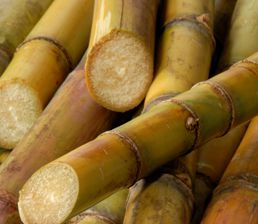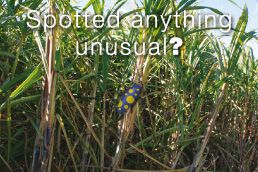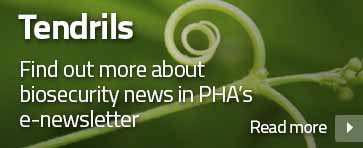 CANEGROWERS represent the biosecurity interests of sugarcane producers and the industry. They are members of Plant Health Australia and signatories to the Emergency Plant Pest Response Deed. Their responsibilities include:
CANEGROWERS represent the biosecurity interests of sugarcane producers and the industry. They are members of Plant Health Australia and signatories to the Emergency Plant Pest Response Deed. Their responsibilities include:
- biosecurity planning and implementation at the national and farm levels
- liaising with federal and state governments on trade issues
- funding and supporting biosecurity initiatives
- participating in national committees and response efforts in an emergency.
Industry overview
Australia’s sugarcane is grown in high rainfall and irrigated areas along coastal plains and river valleys on 2,100 km of Australia’s eastern coastline between Mossman in far north Queensland and Grafton in New South Wales. Queensland accounts for about 95 per cent of Australia’s raw sugar production.
Australia is the world’s third largest exporter of raw sugar, with approximately 80 per cent of production sold to international markets. Major export customers include east Asia, China, Indonesia, Japan, Korea, Malaysia, Taiwan, the United States and New Zealand.
Biosecurity plans, manuals and resources
Expand
 Biosecurity Plan for the Sugarcane Industry
Biosecurity Plan for the Sugarcane Industry
Biosecurity planning provides a mechanism for the sugarcane industry, government and other relevant stakeholders to assess current biosecurity practices and future biosecurity needs. Planning identifies procedures that can be put in place to reduce the chance of pests reaching our borders or minimise the impact if a pest incursion occurs.
The following documents have been prepared for the sugarcane industry.
The Biosecurity Plan for the Sugarcane Industry (version 3) outlines key threats to the industry, risk mitigation plans, identification and categorisation of exotic pests and contingency plans. For a copy, please contact PHA on 02 6215 7700 or email biosecurity@phau.com.au
 Biosecurity Manual for Sugarcane Producers
Biosecurity Manual for Sugarcane Producers
The Biosecurity Manual for Sugarcane Producers contains information to help growers to implement biosecurity on-farm. Manuals usually contain an overview of biosecurity, fact sheets to identify the high priority pests of a crop, tips on crop management, and how to manage people, vehicles and equipment to minimise biosecurity risks. Manuals also contain a biosecurity self-assessment list, and templates to record pest surveillance records and visitors.
More information about on-farm biosecurity for both plant and livestock producers is available from the Farm Biosecurity website.
Promotional item to support the exotic plant pest hotline 1800 084 881.
Pests Expand
Exotic pests (not in Australia)
The following is a list of high priority exotic pests of sugarcane. These pests were identified during the development of the Biosecurity Plan for the Sugarcane Industry in consultation with industry, government and scientists. They have been assessed as high priority pests based on their potential to enter, establish, and spread in Australia (eg environmental factors, host range, vectors) and the cost to industry of control measures.
PHA has a range of fact sheets, contingency plans and diagnostic protocols relevant to these pests. Pest risk review documents are also available for some pests. Please contact PHA on 02 6215 7700 or email biosecurity@phau.com.au for more information.
Endorsed National Diagnostic Protocols are available from the National Plant Biosecurity Diagnostic Network webpage.
| Common name | Scientific name | EPPRD Category | Fact sheet | Contingency plan | Diagnostic protocol |
|---|---|---|---|---|---|
| African sugarcane stalkborer | Eldana saccharina | ||||
| Grassy shoot disease | Sugarcane grassy shoot phytoplasma | ||||
| Leaf scald | Xanthomonas albilineans (exotic strains) | ||||
| Leaf scorch | Stagonospora sacchari | 3 | |||
| Philippine downy mildew of maize | Peronosclerospora philippinensis | CP | |||
| Ramu stunt disease | Unknown | 2 | |||
| Root borer | Polyocha depressella | ||||
| Spotted sugarcane stem borer | Chilo tumidicostalis | CP | |||
| Stem borer | Sesamia grisescens | 2 | |||
| Sugarcane downy mildew | Peronosclerospora sacchari, P. philippinensis and P. spontanea | 3 | |||
| Sugarcane internode borer | Chilo auricilius | ||||
| Sugarcane internode borer | Chilo sacchariphagus | ||||
| Sugarcane leafhopper | Eumetopina flavipes | ||||
| Sugarcane plant hoppers | Perkinsiella bicoloris, P. diagoras, P. lalokensis, P. papuensis, P. rattlei, P. saccharivora, P. vastatrix, P. vitiensis | ||||
| Sugarcane pyrilla | Pyrilla perpusilla | ||||
| Sugarcane stem borer | Chilo terrenellus | ||||
| Sugarcane streak mosaic | Sugarcane streak mosaic virus (Unassigned) | 4 | |||
| Sugarcane whitefly | Aleurolobus barodensis | 3 | |||
| Sugarcane woolly aphid | Ceratovacuna lanigera | DP | |||
| Top shoot borer | Scirpophaga excerptalis | ||||
| White leaf disease | Sugarcane white leaf phytoplasma | 3 | |||
| Yellow top borer of sugarcane | Chilo infuscatellus |
Other pests
The following is a list of documents for other exotic pests of the sugarcane industry. Please note that this is not a complete list of pests: rather it includes pests for which documents exist in the Pest Information Document Database.
Some of the documents presented here are not tailored to the sugarcane industry and are included for information only.
| Common name | Scientific name | EPPRD Category | Fact sheet | Contingency plan | Diagnostic protocol |
|---|---|---|---|---|---|
| Bakanae | Gibberella fujikuroi | CP | |||
| Cane borer | Eldana saccharina | CP | |||
| Cane borers | Chilo spp., Eldana saccharina, Polyocha depressella, Scirpophaga excerptalis and Sesamia grisescens | CP | |||
| Coconut bug | Amblypelta cocophaga | FS | |||
| May beetle | Phyllophaga spp. | CP | |||
| Panicle blight | Burkholderia glumae | CP |






Recent Comments